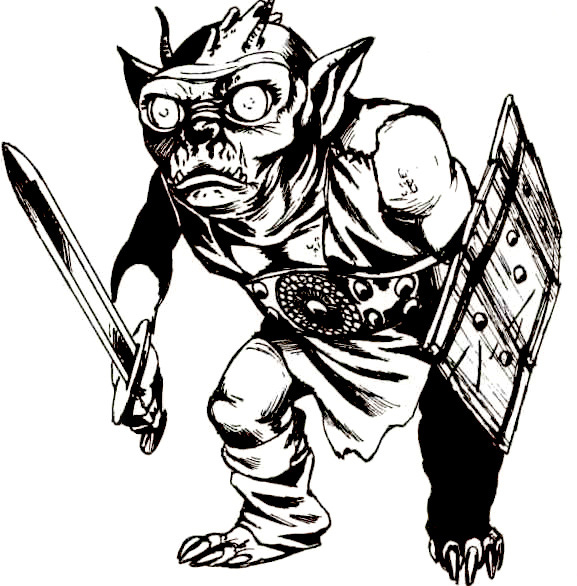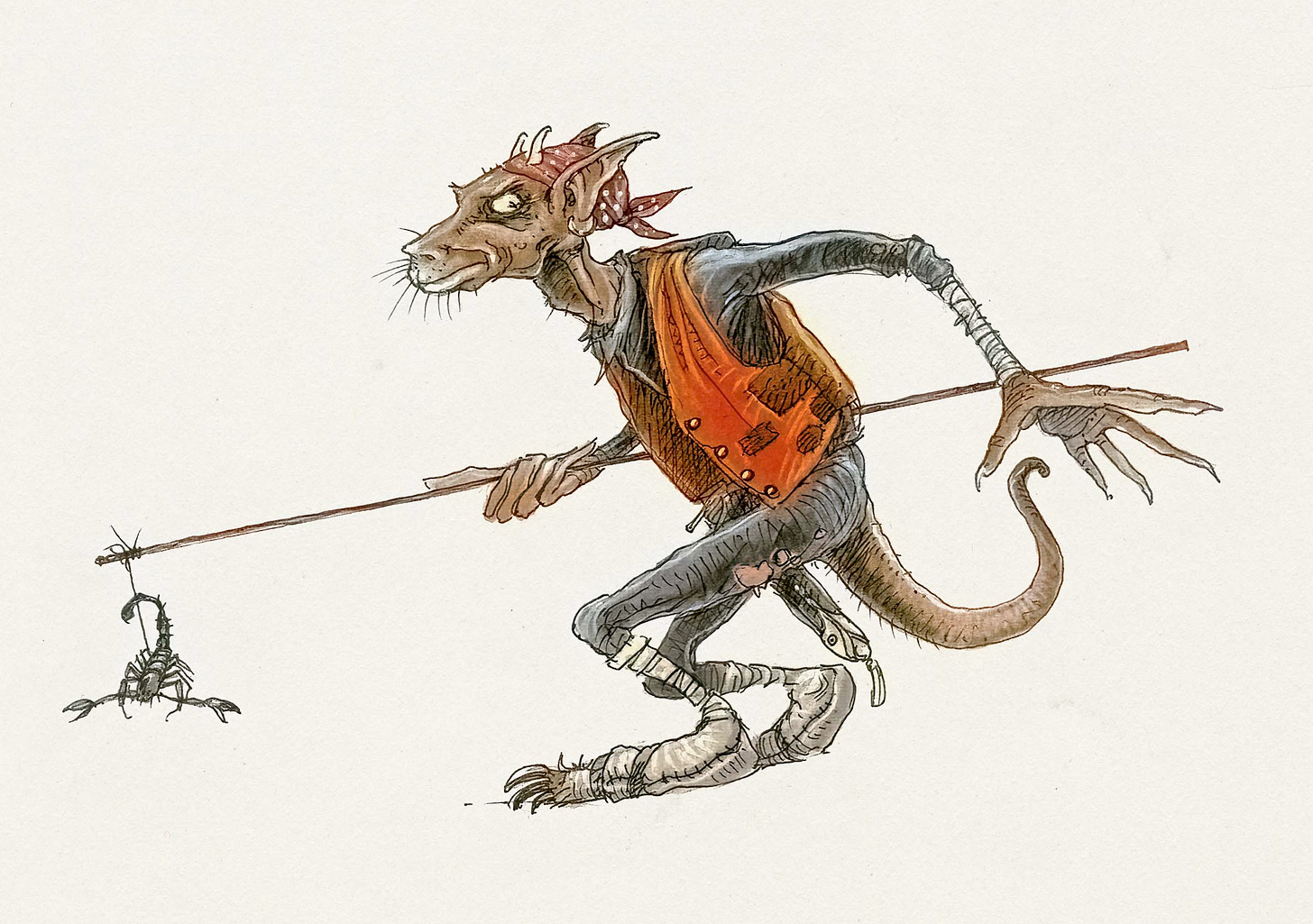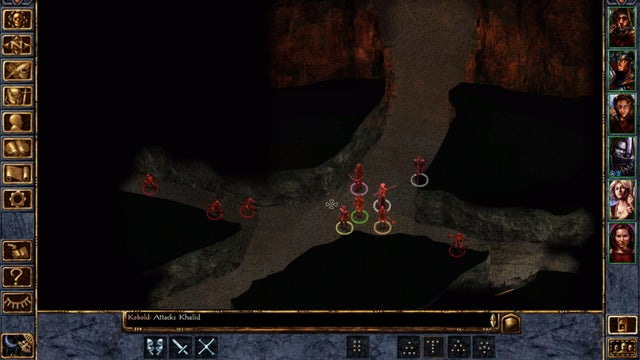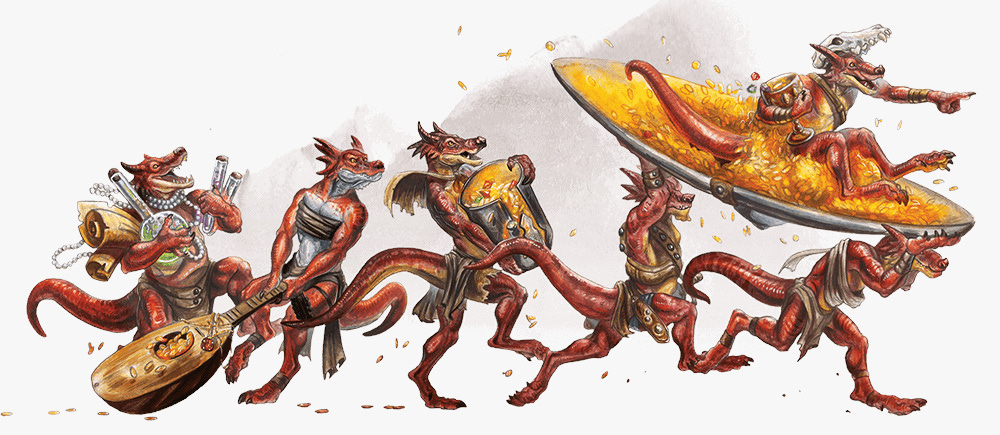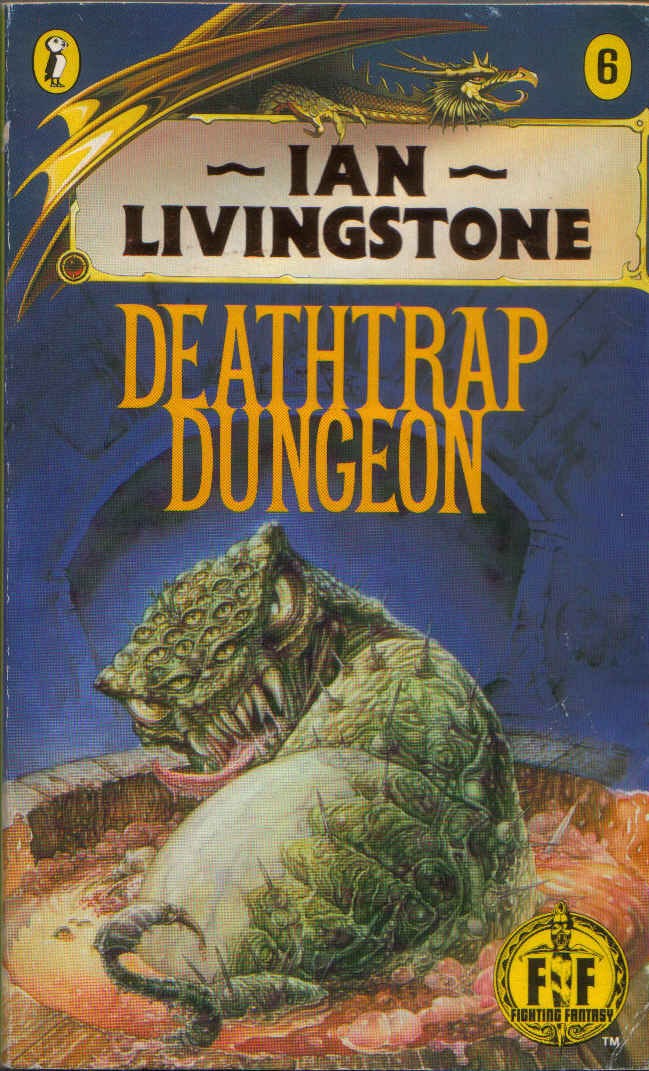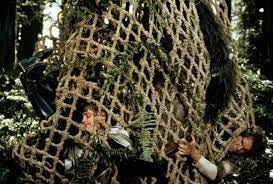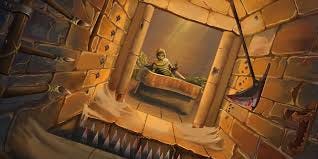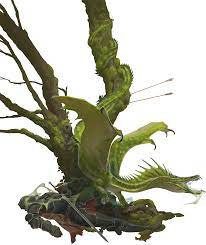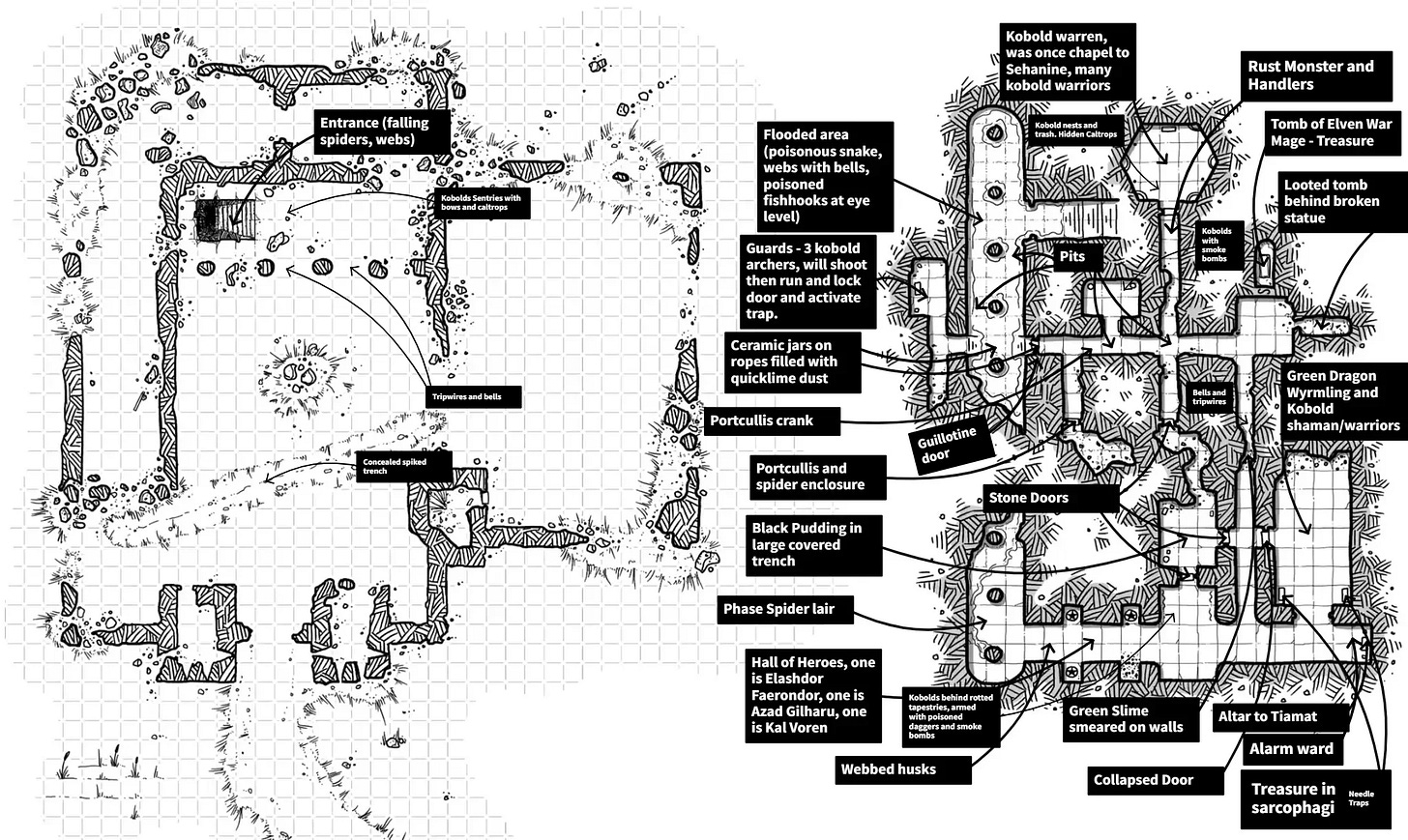Jaquays-ing your dungeon is great, but have you tried Tuckering your Kobolds?
The fine art of running a trap-fest but keeping it fun.
I love kobolds and lately I got to run them in 5th edition D&D. I’ve always enjoyed them.
I liked them when they were weird little pug faced guys in AD&D 2nd Edition Monstrous compendium.
I enjoyed them when Tony DiTerlizzi updated them to weird little rodent looking guys with sweet waistcoats in the AD&D 2nd ed. Monster Manual.
I have fond memories of massacring them by the dozen in the Nashkel mines whilst playing the original Baldurs Gate PC game.
I was a big fan of them in D&D 3.5 when they became funny little lizard men.
And I even dug how they morphed into a varied bunch of dragon minions in the much maligned 4th edition.
Whilst each edition of the game might have changed kobolds cosmetically and even whether they were related to lizards, dogs, or dragons, the way I ran them in my games was heavily influenced by one source: Dragon Magazine, TSR’s monthly magazine for roleplayers (focused on AD&D but with material for other systems. Teenage me was given a subscription for his 12th birthday and collected it religiously for years. The issue of Dragon Magazine thay particularly influenced me was #127:
This issue featured an editiorial by Roger Moore about the now infamous Tuckers Kobolds. These little guys are now a staple part of D&D lore and there are countless stories of GM’s using their own versions of them.
You can find the original editorial here but the tldr is that instead of kobolds being squishy little bags of xp for adventurers to mow through, inventive DM’s have them create lairs filled with elaborate traps. Some editions of D&D have lent into this trope with monster statblocks that included a variety of traps the kobolds could set, but that isn’t really necessary to run Tuckers Kobolds.
There’s plenty of accounts kicking around D&D forums and reddit with DM’s giving accounts of how they’ve used Tuckers kobolds to great effect and for my part, I’ve used them in every edition of D&D since 2nd Edition. I’ve recently run them for a 5th Edition game and they worked very well there too. They can be a good time but there is an art to making them fun.
When I first read that Dragon Editiorial, I was taking my first steps into running games, usually at lunchtimes with some friends at school. My first forays into AD&D had been overland adventuring affairs, heavily influenced by R.A. Salvatore’s Crystal Shard, Joe Dever’s Lone Wolf and R. E. Howards Conan. In my early endeavours as a fledgling DM I struggled with a few aspects of running games. Scaling encounters was one issue - there was no such thing as Challenge Rating and Hit Dice weren’t a great way of judging how deadly a monster might be. An early quest for my players was hunting a Thessalhydra that had been terrorising the region. They were 2nd level and I discovered that adding character levels together and comparing to monster hit dice?Not a good idea. Traps was another issue - I used them rarely and hadn’t employed more than the odd pit trap or spear trap.
Back then, there wasn’t the massive resource of advice and guidance in the form of internet videos, books, blogs, podcasts, etc we have today, I had my books, some adventure modules and I had issues of Dragon magazine and that was about it. I occasionally had conversations with another kid who also DMed but he was a few years older than me and seemed to run a gonzo high powered game where all his players were immortals who were routinely killing gods. He wasn’t exactly a helpful role model, so I was on my own working this stuff out.
When I first ran Tuckers Kobolds, it wasn’t as fun as I’d hoped it be for the players. I prepared an elaborate lair full of death traps and murder holes. Of the characters that entered the kobold lair, two survived. One of them was reduced to a puddle of green slime. One was poisoned to death. One drowned in a water filled pit trap. The characters retreated from the lair, raised those they could and then returned and repeatedly bombarded the place with fireballs until everything was rubble.
The players felt very aggrieved that I’d sprung the devious kobolds on them. Up until this point, they’d fought monsters in ruins, forests, castles and caves but I’d not really used traps much. They didn’t know the kobolds would behave this way and felt very blind-sided going from fighting orc bandits and trolls to this. They also felt like the traps were mostly impossible to detect (the thief had been all about stealth and climbing and hadn’t been able to find or disarm very much).
Telegraph Threat
Their feedback taught me a few things. First, if you’re going to run Tuckers Kobolds, learn about telegraphing threat. This is a well known principle among the OSR gaming circles these days, but is less talked about in mainstream D&D converstations and at the time I’d never seen it mentioned in my rulebooks or magazines. What it boils down to is that it is not fun to be blindsided all the time. Its more of a thrill for a player to see a clue to some threat and then start making decisions about how to approach it and what precautions they take.
How does this translate to how you’re running the game? Firstly, realise that telegraphing threat is not about making spot hidden or perception rolls or passive perception or whatever. Making it contingent on a dice roll removes the player choice part, and that’s what we’re interested in here, so don’t gatekeep telegraphing the threat behind a dice roll. Telegraphing threat is about describing something to make players cautious about their next actions. You don’t necessarily have to give away that a trap is present but that isn’t a terrible idea either. Maybe they encounter a trap that has been sprung. A pit full of spikes and an impaled corpse tends to focus minds.
It could be more obscure than that. A scorch mark. A strong smell of oil or vitriol. A lack of dust on a section of floor. A blood stain. Just little tells that will give players the chance to stop and take a cautious moment to see if it’s safe to proceed.
When I ran Tucker’s Kobolds the first time, I didn’t do this. I simply relied on the thief’s ability to detect traps to highlight danger and the party consistently walked into trap after trap after trap. The players only meaningful choice was how they patched themselves up or put the fires out or drank an antidote. It’s fun for players to find traps and its fun for them to come up with ways to find them. This brought me to another lesson I learned about Tucker’s Kobolds.
Lethal Efficiency Isn’t Fun
It isn’t. It’s not fun for a every single trap to be a lethal killer. A kobold lair isn’t the Tomb of Horrors. They shouldn’t all be decapitating scythes of death or an insta-kill corridor collapse. In retrospect, my 2nd Edition Kobolds must have been mechanical geniuses with an unlimited budget and a few chemists, biologists and metallurgists on the tribal roster. Kobolds have 8 to 10 intelligence. It’s all very well making them cunning trap users but teenage me had got quite overexcited about what a little average intelligence dog man is realistically capable of. I may have also just read Deathtrap Dungeon so Ian Livingstone and Steve Jackson can shoulder some blame.
Tucker’s Kobolds work best when you imagine them as Kevin Macallister in Home Alone, but where the traps aren’t being set off by Joe Pesci with the resilience of a Tom and Jerry cartoon. Use caltrops. Spikes. Lamp oil. Grease the floors. Use caustic powders. Nets with fish hooks. What you’re going for here is death by a thousand cuts, not a sequence of ultra-lethal death traps the Joker would be jealous of.
Let me be clear, I'm not advocating that all traps should be a couple of points of damage. By all means, dish out the pain. Just don’t make every single one a save or die affair. Traps can also cripple, debilitate, blind and impede intruders as well as alert the defenders.
That said, it doesn’t hurt to make one or two traps higher in lethality so your players take them seriously, but use them reasonably sparingly and save them for guarding things of value. This has two advantages: players will begin to view visible valuables as a telegraphed threat, making some choices about how they approach them. Players will also feel that they earned those valuables once they pass the threat of a lethal trap - a reward for cleverness and ingenuity.
Quantity Not Quality
You don’t achieve death by a thousand cuts with half a dozen traps and call it a day. My 2nd Edition murder machines didn’t actually have that many traps in their lair, but they were all so efficiently lethal, they didn’t need many, and the survivors were quite overwhelmed by attacks from murder holes and the like that they ran. When I run kobolds now, I layer up the traps. Often a room will have two or three. None of them hugely well made, none of them particularly well hidden. If you search for them, you’ll find one. If you keep searching you’ll find two. If you’re really thorough, you’ll find three. I won’t require a roll, just take the time to look. If you’re clever and the way you describe your search would discover them all, I’ll let that happen in one go. Be methodical, be clever. Simple right? You could just make it through the lair by being slow, steady and careful. Kobolds, schmobolds, this will be easy.
Keep The Pressure Up
Wrong. What my Kobolds won’t do, is give you the time. My Kobold lairs have vantage points, crawl spaces, tunnels and murder holes. The Kobolds will hit and run. They’ll throw caustic powders, smoke bombs, wasp nests and scorpions. Perhaps it’s better if I gave an example.
In the last Kobold lair I ran (we’re in 5th edition now, baby!), the players navigated the entrance to the lair. They spotted the poisoned fish hooks at eye level in the cobwebs around the entrance. They waded through the knee deep water of the cistern with care, poking ahead with poles and swords, discovered the pit traps concealed among the pillars under the surface. Then, out of the darkness, they were peppered with a volley of arrows. Kobold archers skittered through the water and through a side tunnel, locking a door behind them. From beyond, the party could hear jeering insults and the clank of some sort of chain mechanism. Fearing what was being set up and not wanting to give the kobolds more time, the ranger decided to leap the pit they’d discovered to where the archers had stood, reasoning that it must be safe ground. It was a smart move.
But what the ranger hadn’t realised was that the Kobolds had strung fishing line above the pits in the darkness, to trigger a trap if anyone of human height jumped the pits. The ranger blundered through the wires with their leap, triggering ceramic pots of powdered lime that swung like pendulums and smashed against them, leaving them choking, blinded and blundering in a cistern full of pit traps. The paladin decided to kick the door in as the area started to fill with choking, blinding powder. He hadn’t taken the time to check the door, panicked about being possibly blinded and a jagged slab of sharpened metal came down on his shin, nearly taking his leg off. Several arrows bounced off his armour and he saw the kobolds running further down the corridor whilst at the same time, the portcullis that he had heard raised in a side tunnel released the swarm of giant wolf spiders the Kobolds had reared.
That was the first room of the lair. Fish hook cobwebs. Pit traps. Lime pots. A crude guillotine door, leading to a released spider swarm. None of these traps were super lethal or difficult to spot. They found the first couple with ease. But a bit of pressure taking the time away to search for the rest and suddenly you have damage, blindness, choking and crippled adventurers. Keep the pressure up.
Bring Friends
I mentioned the spiders being released on my players and I think creatures is an aspect of traps a lot of people miss. I like to used a lot of vermin, bugs and oozes in Kobolds lairs to augment the traps and ambushes. Some can be lethal. I’ve had Kobolds drop jars of offal and rot grubs on players as a lethal trap.
Later in that same lair as the spider trap, the players were fleeing a Black Pudding (a metal dissolving ooze monster). The Kobolds had been feeding it and using it to block one area of egress to their lair. The players fled back along the tunnel to where they’d used a door to bridge an uncovered pit trap, only to discover two kobolds with wooden spears herding an angry rust monster toward them. The players had to fight on two different fronts on a rickety door balanced over a spiked pit trap. It was a fun encounter and it was using another method I like my Kobolds to favour.
Attack Resources
The rust monster/black pudding ambush was there to attack metal resources of the players - treasure/armour/weapons. You don’t have to have all your traps be about damage. You can try and destroy treasure, rations, light sources, armour, weapons. There’s plenty of monsters, spells and items in D&D that do this, but it’s just as easy to use simple methods too. Just soaking the players will douse light sources. A literal bucket over the door prank and suddenly they’re fumbling with tinderboxes as the Kobolds release the giant centipedes.
Attack When They’re Vulnerable
I like to create areas in Kobold lairs that are precarious. A hazard that’s tricky to navigate. Rather than a lethal trap it’s a lot more fun as the players aren’t being blindsided - they know what they’re dealing with. The twist is that the Kobolds can make it difficult for them. Scaling a cliff when Kobolds drop rocks. Crossing a rope bridge when you can see one of the little bastards gleefully sawing at the ropes.
In one 4th Edition game, my players were using a rickety lift platform in a mine. The Kobolds dropped beehives on it and one character fell 80 feet down the mineshaft, barely surviving only to be menaced by the ghouls living in the refuse heaps at the bottom of the shaft. My players still talk about that one.
Small But Perfectly Formed
The other aspect of my Tucker’s Kobolds I play up a lot these days is they’re just little guys. Teeny little fellas. Smol beans. That in itself can act as a synergy with traps - see the cobwebs with fishhooks? The kobolds walk under them. Pit traps under two feet of water? Doesn’t bother a dog paddling kobold. Concealed pit trap under thin wood? Kobold is walking across that because he’s so light. Being small also gives a big mobility advantage in fitting through crawlspaces and the like. But the best part about being small?
Bringing the fight to the 7 foot tall rune knight great sword specialist in a room with a 5 foot high ceiling. Stabbing him repeatedly, running away from his disadvantaged swings with the greatsword as it catches on the low ceiling and finally dropping rot grubs on his upturned face when he chases them up a ladder, desperate to fight in a more open area.
Bring The Comedy
That scene I described with the lime pots had the players laughing for half of it. It’s easy to make Kobolds comical and I recommend you do. When your layers of traps go off, lean into the pratfall comedy aspect of it. Lean hard on inspiration from movies like Gremlins or Labyrinth and have your Kobolds be little jeering cackling evil child-like things because while it drives your players crazy, it will also make them laugh.
It’s much more fun when the meat-grinder you’re navigating has some laughs. Contrast with my original attempt at Tucker’s Kobolds which was more akin to the scene in Fargo with the wood chipper and my players characters the red spray out the other side. The Kobolds were vicious and efficient little murderers, with no dialogue and silently operating traps that Jigsaw would have envied. Not funny and they didn’t enjoy it.
Squish ‘Em
The comedy aspect should also influence how kobolds die. And they will die. They only have a handful of hit points. When the players get hold of them they will die brutally and horribly. So play it up. You’re putting players through a meat grinder of Home Alone style brutality. Let them have a satisfying revenge. Your Tucker’s Kobolds are going to build up one big desire to kill them messily to let the players do that.
My Kobolds explode like tomatoes if you hit them with a spell. They detonate like ripe fruit if you crush them with a warhammer. Their feeble attempts at a parry leave them cut in several pieces. Kobold go squish. It’s a great payoff for a trap dungeon to get a bit of payback.
Finally, When In Doubt Bring The Dragon
I quite liked the more recent trend of Kobolds being dragon minions. But I don’t use them with anything bigger than a wyrmling generally.
The dragons themselves make a good trap. A green wyrmling flooding a corridor with chlorine gas when the characters trigger an alarm? *chefs kiss*. A blue wyrmling electrifying a metal floor? Perfection. They also make a great finale to a Tuckers Kobolds gauntlet. A boss for the players to vent that pent up frustration on with a pile of treasure.
That’s pretty much all I have to say about running Tuckers Kobolds. I’ll leave you with the dungeon I ran them in a couple of weeks ago. Till next time!




